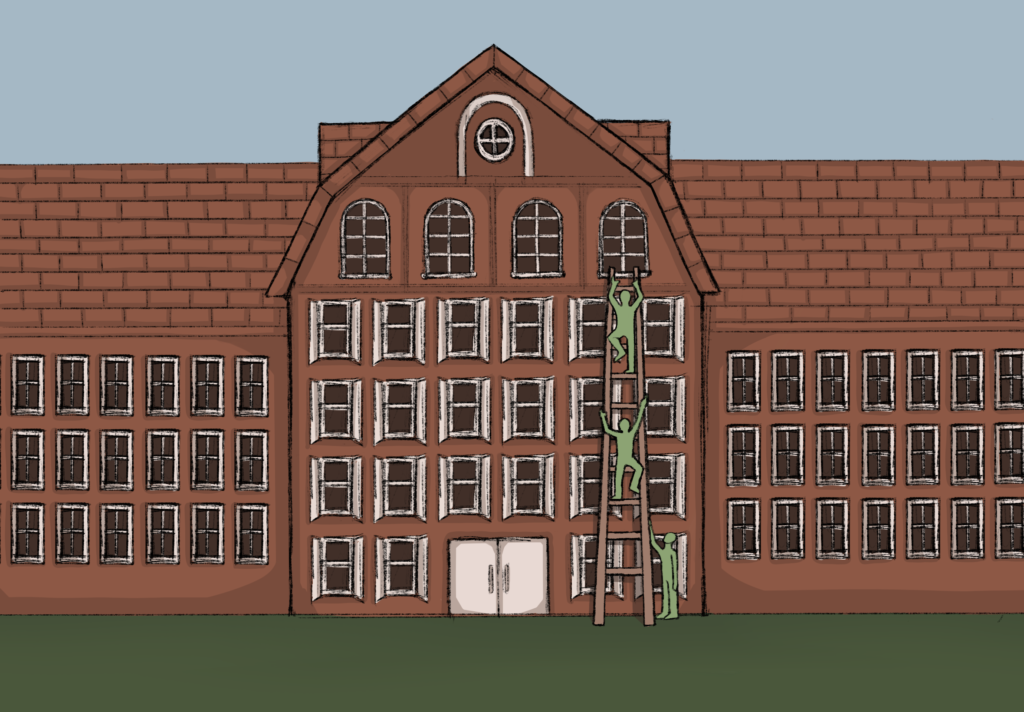The past week-and-a-half has undoubtedly been hectic for new and returning students alike. The transition to the new schedule has not gone as smoothly as many had hoped. The interminable stretch of individual classes combined with the race to the dining hall has made the initial phase of the new school awfully tiring.
Last year’s schedule consisted of 45-minute classes, with each course meeting four times a week. The school day began at the same time as it does this year, but ended roughly a half hour earlier. Conference blocks ran for thirty minutes, three times a week. Students had a lot more free time during the day.
This isn’t to suggest that the new schedule lacks benefits. One, every student is given a lunch block. Also, with the longer class periods, teachers can incorporate more activities into their lessons, helping us learn better and more. In-class instruction time jumped from 180 minutes to 210 minutes. And, with classes now meeting only three times a week, students supposedly have more time to finish homework and prepare for projects and other assessments.
Nonetheless, the schedule has its disadvantages as well. Despite promised lunch time, the lines are now longer than ever, often making it impossible to enjoy a meal of choice while also arriving to class on time. That, however, is another problem altogether. The most prominent issue with the new schedule is the increase in workload and the decrease in free time.
Although, personally, a portion of the problem is attributed to the transition between freshman year and sophomore year, the expansion in homework thus far has been nearly unbearable. Despite longer class periods, I and many others have been stuck with unbearable amounts of homework. With the decrease in conference time and free periods, it has become a struggle to finish the assigned work every night, regardless of the fact that classes meet just three times a week. Because the school day ends 25 minutes later, sports begin later, consequently end later and, in turn, students eat dinner later. Study hours don’t start until 8:00 p.m. now, but the schedule for lights out remains the same as it’s always been. So, of course, the time to complete school work is often not long enough. It is then that students may find themselves waking up considerably earlier than what would normally be necessary in order to complete the material needed for the day’s classes.
The problem with this is not only insufficient time to complete homework or lack of sleep: it is an insufficient time to do nearly anything. Sports for most students conclude between 5:30 and 6:15, leaving them to run to dinner before more often than not hurrying to a club meeting. Most club meetings begin anywhere between 6:00 p.m. and 7:00 p.m., and are now increasingly difficult to attend given the late end to practices. Meetings typically end just before study hours. Underformers have only until around 10:30 p.m. to finish the large workload planted before them.
Students may eventually resort to shying away from attending club meetings to compensate for lost time as a result of the new schedule. It will be then that the newly implemented schedule will have extended its benefits to extracurriculars and, thereby, all aspects of Choate life. Whether the schedule’s added class time will prove to be a great addition to the campus is yet to be known, but, thus far, it seems to be doing more harm than good.



